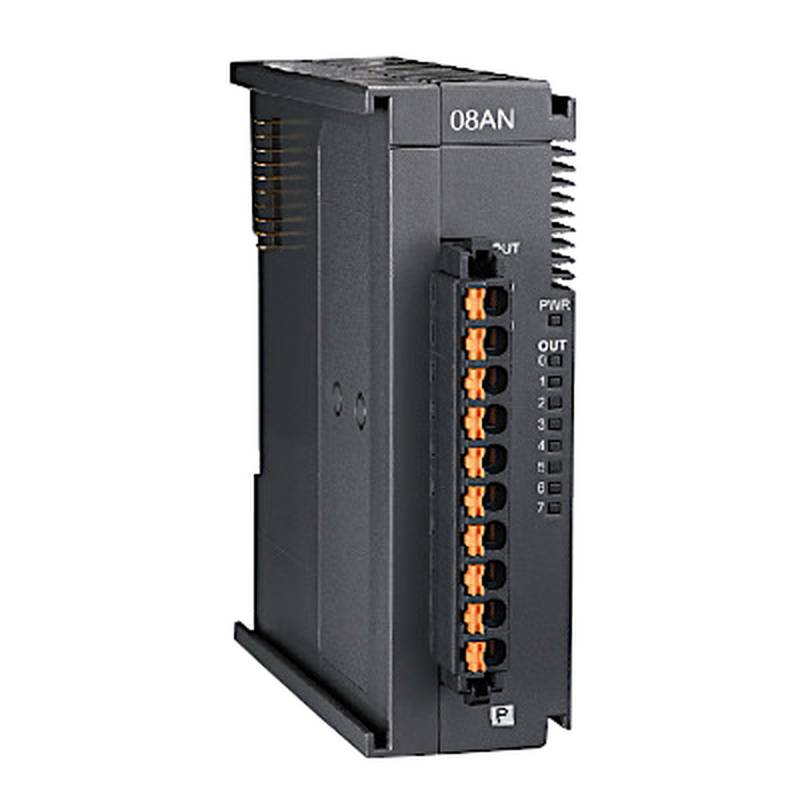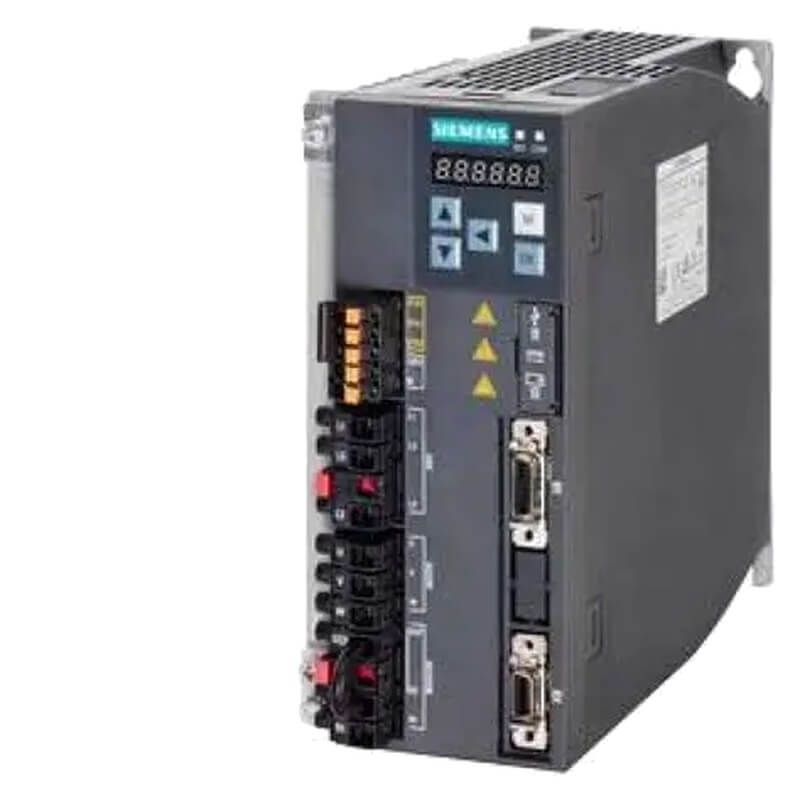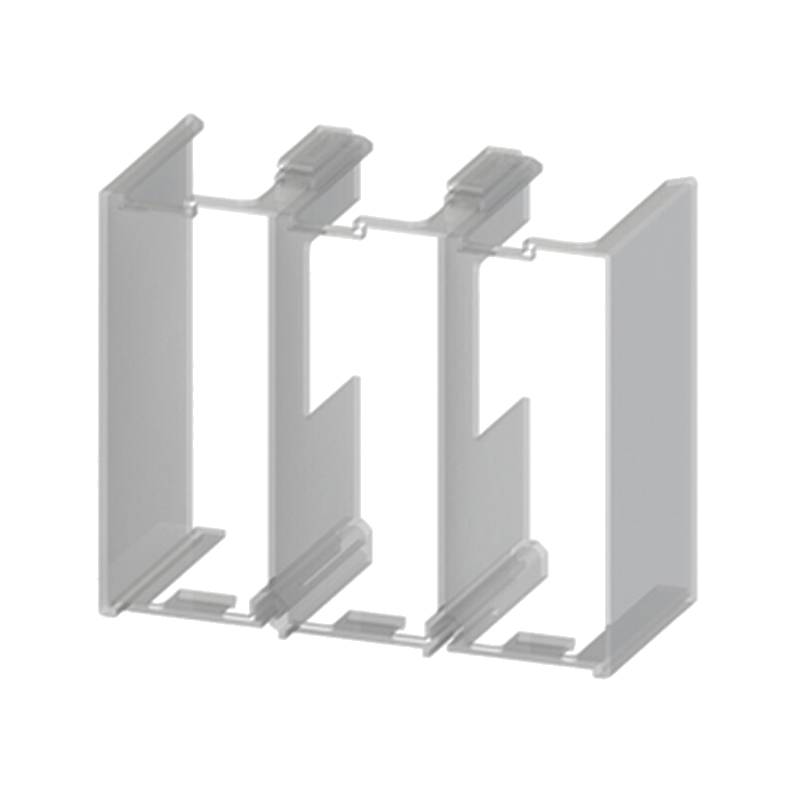
The Siemens 3RT5066-6AP36 is a high-performance AC control contactor designed for demanding industrial applications, offering robust operation and exceptional reliability. With a substantial 300A current rating and a versatile 220-240VAC/DC coil voltage, this contactor excels in power switching and control circuits. Its advanced design ensures high electrical endurance and superior contact reliability, making it a preferred choice for integrators and maintenance professionals seeking dependable motor control and power distribution solutions.
Product Specifications
| Feature | Specification |
| :-------------------- | :-------------------------------------------------- |
| Product Type | AC Control Contactor |
| Model Number | 3RT5066-6AP36 |
| Coil Voltage | 220-240VAC/DC |
| Rated Operational Current (AC-3, 400V) | 300 A |
| Number of Normally Open (NO) Contacts | 3 |
| Auxiliary Contacts | 1 NO + 1 NC (typically integrated or orderable) |
| Rated Impulse Withstand Voltage | 8 kV |
| Control Circuit Voltage Type | AC/DC |
| Mounting Type | 3-phase or 4-phase |
| Terminal Type | Screw-type terminals |
| Operating Temperature | -25 to +60 °C |
| Protection Class | IP20 |
| Standards | IEC 60947-4-1, IEC 60947-5-1, UL, CSA |
Core Features & Market Positioning
The Siemens 3RT5066-6AP36 distinguishes itself through its robust construction and high-capacity switching capabilities, positioning it as a premium component for heavy-duty industrial automation. Its ability to handle 300A makes it suitable for controlling large motors and high-power loads where other contactors might fall short. The integrated surge suppression and a wide temperature operating range further enhance its reliability in harsh environments, a key differentiator in the competitive industrial control market. Siemens' reputation for quality and engineering excellence underpins the market confidence in this product line, emphasizing longevity and performance.
Key Application Scenarios
This Siemens 3RT5066-6AP36 contactor is ideally suited for a wide array of industrial applications requiring reliable high-current switching. It is commonly employed in the direct-on-line (DOL) starting of large industrial motors in sectors such as mining, material handling, and heavy manufacturing. Furthermore, its capacity makes it suitable for use in power distribution panels, large HVAC systems, and complex automation systems where robust and dependable load switching is paramount. Applications involving pump control, fan management, and conveyor systems frequently benefit from its high performance.
Practical System Integration Guidance
Integrating the Siemens 3RT5066-6AP36 into existing control systems is streamlined by its standard terminal configurations and compatibility with Siemens' broader SIRIUS modular system. Ensure proper wiring of the main power circuits to the substantial screw terminals, adhering to torque specifications to guarantee secure connections and prevent overheating. For the control circuit, connect the 220-240VAC/DC coil voltage to the designated terminals, observing polarity if DC is utilized. It's crucial to wire auxiliary contacts according to the control logic requirements, often integrating them for feedback or interlocking functions. Always consult the detailed wiring diagrams in the product manual for precise connections to control devices like PLCs or manual starters.
Operation and Risk Mitigation
Operating the Siemens 3RT5066-6AP36 involves understanding its switching characteristics and ensuring proper electrical isolation during maintenance. Users should always verify that the control voltage is de-energized before performing any inspection or work on the contactor or connected circuits. The contactor is designed with inherent safety features, but adherence to lockout/tagout procedures is critical. Common troubleshooting may involve checking for coil energization or verifying the condition of the main contacts if a load is not being switched. Overload protection should always be coordinated with the contactor's rating to prevent damage from sustained overcurrents.
Scalability & Long-Term Value
The Siemens 3RT5066-6AP36 offers significant long-term value through its compatibility with the extensive SIRIUS ecosystem, allowing for seamless integration with other Siemens components like overload relays, circuit breakers, and communication modules. This modularity supports system expansion and future upgrades. For facilities moving towards Industry 4.0, these contactors can be paired with smart communication interfaces to provide real-time operational data, enhancing predictive maintenance and overall system efficiency. The robust design ensures a long operational life, minimizing downtime and replacement costs over the equipment's lifecycle.
Frequently Asked Questions (FAQs)
What is the main function of the Siemens 3RT5066-6AP36 contactor?
The Siemens 3RT5066-6AP36 serves as a high-power AC control contactor. It is primarily used for switching large industrial loads, most notably electric motors. Its robust design allows it to handle significant electrical currents, ensuring reliable operation in demanding industrial environments.
How does the 300A rating impact its applications?
The 300A rating signifies the contactor's capacity to manage substantial current flows safely. This makes it suitable for directly controlling high-horsepower motors and other high-demand electrical equipment. It ensures that the contactor can withstand the thermal and electrical stresses associated with these heavy loads.
Can the Siemens 3RT5066-6AP36 be used with DC loads?
Yes, the Siemens 3RT5066-6AP36 features a versatile 220-240VAC/DC coil voltage. This allows it to be controlled by either AC or DC control circuits. However, it's important to confirm that the main contacts are rated appropriately if used for DC load switching, as DC arc suppression differs from AC.
What are the advantages of using a Siemens contactor?
Siemens contactors are renowned for their high reliability and long operational lifespan. They are built with quality materials and engineered for consistent performance, even in harsh industrial settings. The SIRIUS modular system offers excellent integration capabilities, simplifying system design and maintenance.
How is the Siemens 3RT5066-6AP36 typically installed?
Installation involves securely mounting the contactor onto a DIN rail or a control panel. The main power conductors are connected to the robust screw terminals, while the control circuit wiring connects to the coil and auxiliary contact terminals. Proper torque on screw terminals is critical for safe and efficient operation.
What is the coil voltage of this Siemens contactor?
The Siemens 3RT5066-6AP36 operates with a coil voltage of 220-240VAC/DC. This flexibility means it can be powered from either an AC or DC control source within this voltage range. Always ensure the control power supply matches the specified voltage for proper activation.
What types of contacts does this contactor have?
This specific model, the 3RT5066-6AP36, is configured with three normally open (NO) main power contacts. It also typically includes auxiliary contacts, often one normally open (NO) and one normally closed (NC) for control logic functions, which can be essential for interlocking or status signaling.
What safety considerations are important when using this contactor?
Safety is paramount; always de-energize the control and power circuits before servicing. Adhere strictly to lockout/tagout procedures. Ensure that the contactor is properly rated for the connected load and that appropriate overcurrent protection is in place to prevent damage.
How does this contactor integrate with overload protection?
The Siemens 3RT5066-6AP36 is designed to work seamlessly with Siemens 3RU overload relays or other compatible thermal overload protection devices. These relays monitor motor current and trip the contactor in case of an overload, preventing motor damage and downtime.
What are the benefits of the SIRIUS modular system for this contactor?
The SIRIUS modular system allows for easy expansion and customization. Components like auxiliary contact blocks, surge suppressors, and communication modules can be quickly added. This enhances functionality, simplifies troubleshooting, and supports future upgrades or integration with smart factory systems.

























